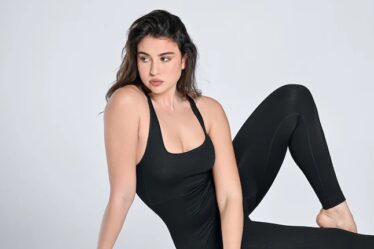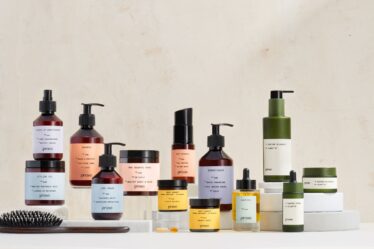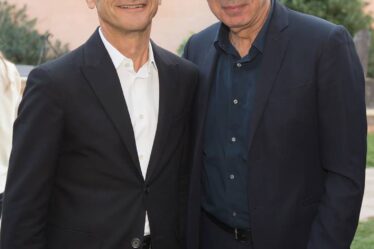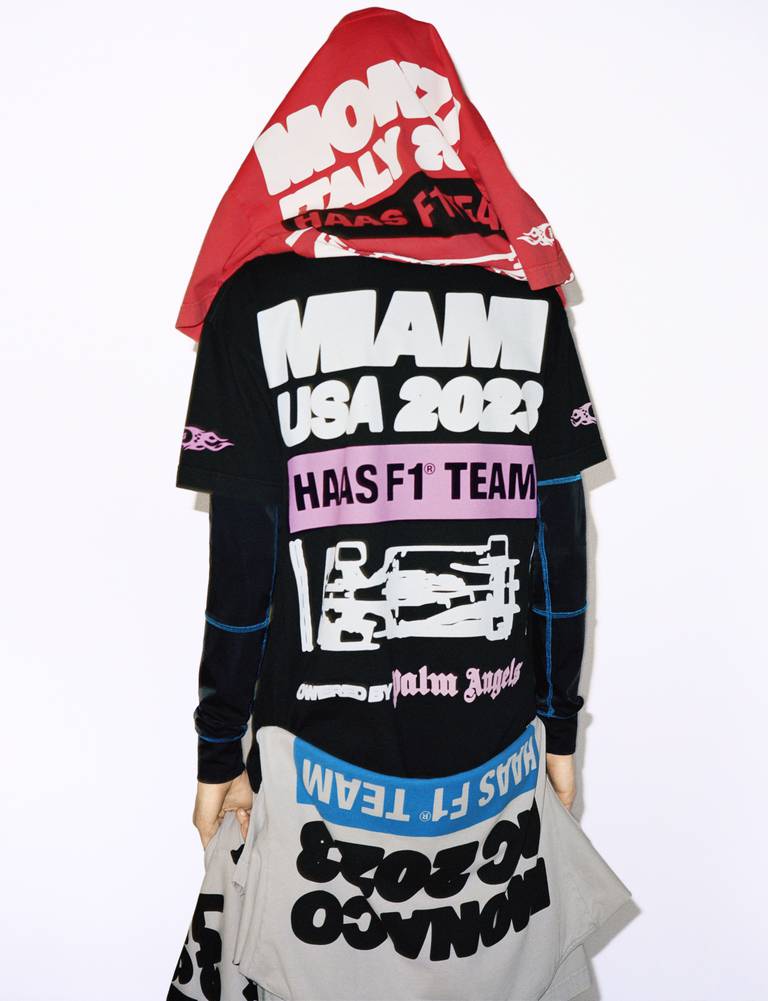
SILVERSTONE, UNITED KINGDOM — With 10 minutes to go before the start of the British Grand Prix on Sunday afternoon, the sight of two familiar faces sent the crowd into a frenzy: actors Brad Pitt and Damson Idris marched down the track, stalked by cameras as they filmed a scene for the upcoming Formula One movie “Apex.”
Produced by Apple Original Films in partnership with Lewis Hamilton — a seven-time championship winner and the competition’s most bankable star — the film will tell the story of a retired American racer (Pitt) who returns to the track to aid an up-and-coming young driver (Idris).
The big-budget project, set to be released late next year, is the latest sign that Formula One’s newfound cultural relevance, fuelled by the Netflix series “Drive to Survive” and swelling ranks of celebrity guests on the paddock.
Fashion wants in. PVH-owned Tommy Hilfiger’s logo appears on Pitt’s and Idris’ jumpsuits and racecars in the film. In the real world, Louis Vuitton, Chanel, Hugo Boss and Palm Angels are among the brands that have entered the Formula One universe through special projects, team partnerships or racing-inspired collections.
Between Drive to Survive, Apex and the growing number of fashion deals, Formula One is on its way to joining the top tier of global sports, an elite group that includes football, basketball and tennis where matches are among the biggest marketing opportunities out there and the game’s biggest stars can drive fashion trends globally and command lucrative luxury brand ambassador deals.
While other sports like football and basketball are already saturated with fashion partnerships, there is still a considerable opportunity for brands to capitalise on exposure to new audiences through Formula One.
“With F1 becoming more popular around the world but particularly in the US, I also think the fashion world has realised the potential that the sport has to reach global audiences,” Hamilton told BoF.
F1′s Long Rise
Founded in 1950, Formula One spent most of its first seven decades as a niche competition with a mostly European fan base.
That began to change in 2017, when Liberty Media Corporation, which also owns the Atlanta Braves and SiriusXM satellite radio, acquired the competition. F1′s new owner has spent the past five years transforming the sport into an international spectacle with a booming Gen-Z fanbase.
Key to that project was changing the broadcasting strategy, abandoning a mostly pay-per-view model in favour of deals with mainstream sports networks like ESPN and Sky.
The group also relaxed its social media policy. Until 2017, drivers and teams were forbidden from using social media in the paddock area where they are based during race weekends.
Lewis Hamilton was censured from using Snapchat in the paddock in 2016. Now, he’s able to share behind the scenes content with his fans, like a series of images of him and his dog walking through the paddock ahead of the British Grand Prix, that fetched almost one million likes on Instagram.
The author has shared an Instagram Post.You will need to accept and consent to the use of cookies and similar technologies by our third-party partners (including: YouTube, Instagram or Twitter), in order to view embedded content in this article and others you may visit in future.
Liberty Media also began courting the fashion industry. An unexpected apparel collaboration with Japanese streetwear giant A Bathing Ape in 2019 was a watershed moment.
But nothing turbocharged the sport’s appeal more than “Drive to Survive”. Netflix’s docuseries, which gained unprecedented access to the sport’s inner workings, gave fans a behind-the-scenes look at the life of drivers, team principals and even their family members for each of the last five Formula One seasons.
F1 races are now attended by A-list celebrities. Shakira went to last week’s British Grand Prix along with a host of actors and athletes. Michelle Obama and Michael Jordan were special guests at the Miami Grand Prix in May. The inaugural Las Vegas race in November is set to be the sport’s largest pop culture showcase to date. Liberty Media is reaping the rewards of investing in North America: the 2022 season grew US viewership by 28 percent year-on-year, recording 1 million viewers on average per race for the first time, per ESPN.
Fashion’s Big Opportunity
Formula One’s new approach has made the sport ripe for partnerships with fashion brands looking to ramp up so-called cultural strategies of meeting consumers wherever their interests lie.
“It’s like having a Super Bowl every weekend.”
Brands are taking advantage of the sport’s newfound cool factor in ways that go far beyond simple merch collaborations. Italian streetwear brand Palm Angels recently kicked off a partnership with American team Haas F1 as its art and entertainment curator, with dinners, parties and other events at key moments throughout the season. It also released a collection of Haas co-branded apparel, including jackets and sneakers.
“Formula One is getting bigger and bigger in the US, our brand’s primary market, so it’s yet another way we can serve our consumers there,” said Palm Angels founder Francesco Ragazzi. “It’s like having a Super Bowl every weekend.”
Since 2021, Louis Vuitton has designed a bespoke travel case for the Monaco Grand Prix trophy, and seated Alpine F1 driver Pierre Gasly, dressed head-to-toe in LV-logoed apparel, front row at Pharrell’s debut show for the brand in June. In May 2022, Chanel presented a Formula One-inspired cruise collection featuring a racing helmet-style handbag, as well as an embroidered T-shirt featuring a racing car, which sent TikTok into overdrive when fans tried to get their hands on the collectors’ items. LVMH-owned Berluti became the “elegance partner” of Alpine F1.
“Previously, the idea of getting fashion brands involved in the sport in this way wouldn’t have been considered by Formula One,” said Toni Cowan-Brown, a San Francisco-based content creator and founder of Sunday Fangirls, a project launched to combat stereotypes of female motorsports fans. Her playful merch — like $30 caps with slogans such as “not the plus one” — has become a symbol of Formula One’s new draw.
Now, fashion partnerships are less of a novelty and are becoming an important part of teams’ marketing strategies. The McLaren F1 team’s first major collaboration was in 2021, a sellout tie-up with Rhuigi Villaseñor’s LA luxury label Rhude, which included a $12,000 co-branded racing jacket inspired by the team’s vintage uniforms and a $7,000 collectors’ item helmet. Since then, the team has signed deals with fast-growing British sportswear brand Castore, iconic cap company New Era, heritage sneaker brand K-Swiss and sports merch giant Mitchell & Ness.
Boss’ partnership with Aston Martin F1, which kicked off in 2022, provides performance and casual apparel and footwear for the entire team, including drivers and support staff. It’s set to release co-branded apparel for fans in the next year, said Nadia Kokni, senior vice president of marketing at Hugo Boss.

“The interesting thing is that the majority of F1 teams haven’t got into the partnership space yet when it comes to fashion,” said Emma Philpott, a veteran Formula One and motorsports consultant, who worked as Lewis Hamilton’s publicist between 2014 and 2018. “There’s a huge, huge space left for brands, I think, to come in and really begin to push boundaries in the sport.”
A New Generation
Formula One’s new image is thanks in no small part to Hamilton, who has brought fashion into the centre of the sport’s ecosystem — often in the face of considerable resistance.
He shot to global fame over the last decade thanks to his dominance as the sport’s first Black superstar. His love of fashion, jewellery and tattoos, and his championing of social causes often stood out among the once sterile and corporate atmosphere that surrounded Formula One.
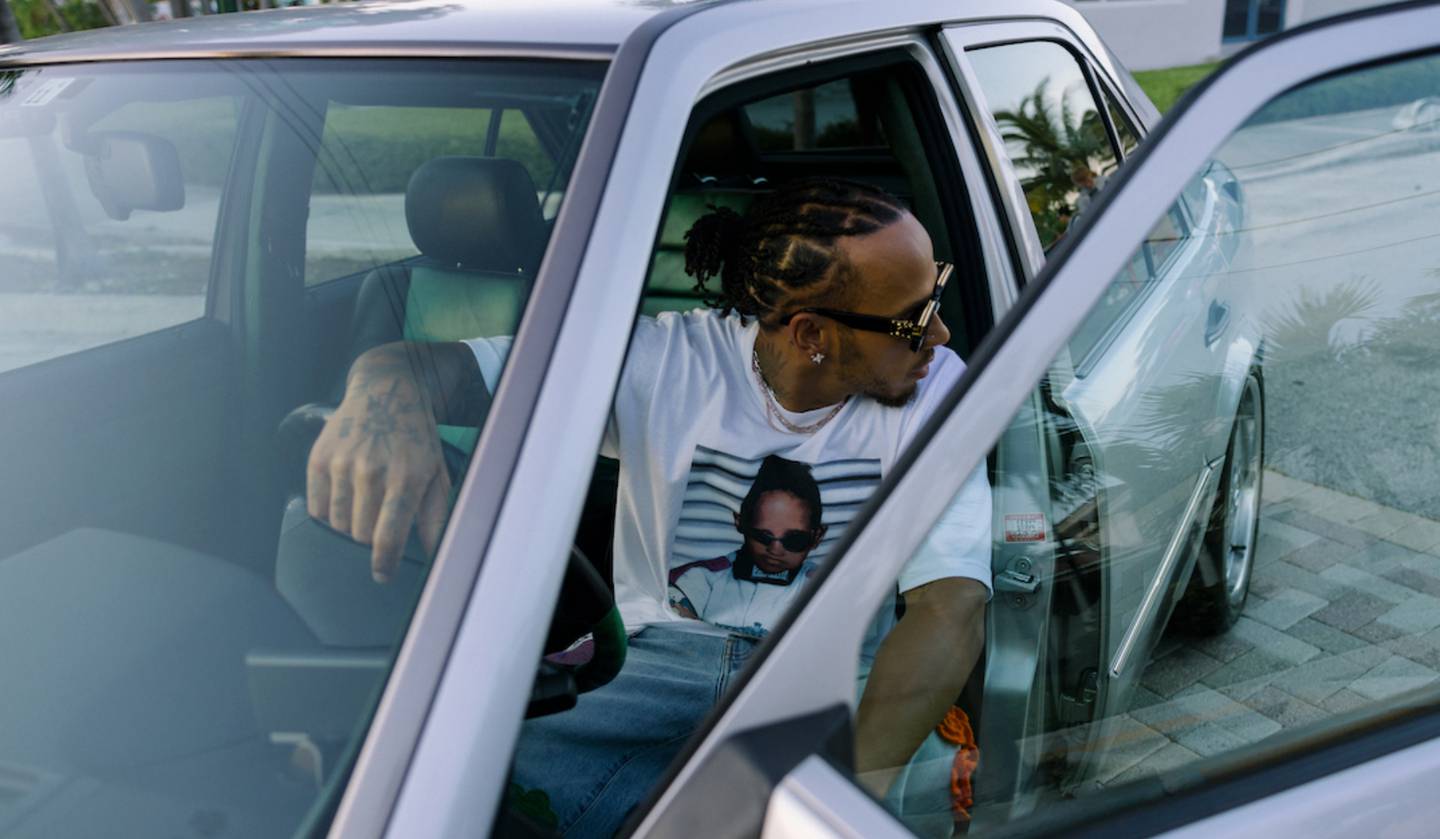
“When I was first exploring my style in my initial years in the sport, it felt at times like I was the only one pushing those boundaries,” said Hamilton, whose love of fashion and expressive pre-race outfits were often criticised by purist fans, traditional media outlets and even the former Formula One owner Bernie Ecclestone. “There was a sense that high fashion and high performance [in F1] couldn’t exist alongside each other.”
Since 2018, the British driver has co-designed several collections with Tommy Hilfiger, also acting as the brand’s global menswear ambassador, and recently brokered a sellout collaboration between New York menswear favourite Awake, Tommy Hilfiger and the Mercedes-AMG F1 team.
He has created his own version of the NBA’s tunnel walk to flex his love of fashion, arriving at race weekends wearing full looks from niche London brands like Saul Nash, Ahluwalia and AGR Knit, and more recently outfits from his own label +44, which he launched last year.
But while Hamilton is the best-known entity and household name in F1, he has been joined in recent seasons by a fresh crop of drivers — including Gasly, Monégasque driver Charles Leclerc and rising Chinese star Zhou Guanyu — eager to use fashion to cultivate their images and attract sponsorship income.
The author has shared an Instagram Post.You will need to accept and consent to the use of cookies and similar technologies by our third-party partners (including: YouTube, Instagram or Twitter), in order to view embedded content in this article and others you may visit in future.
“Obviously the pioneer of fashion in the paddock was Lewis, opening so many doors for the rest of us younger guys,” Gasly told BoF. “Our sport is booming right now which brings great opportunities to build relationships like I have with brands like Vuitton or Berluti.”
Hamilton agrees this is just the beginning of fashion’s involvement with Formula One.
“There’s been so much interest recently from some of the people I know in fashion to learn more about the sport,” he said. “Once I bring them down to a race, they’re hooked.”

